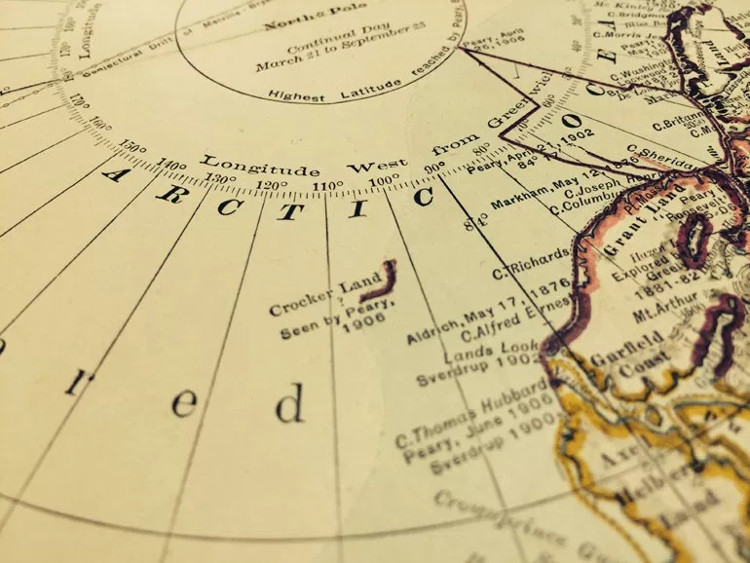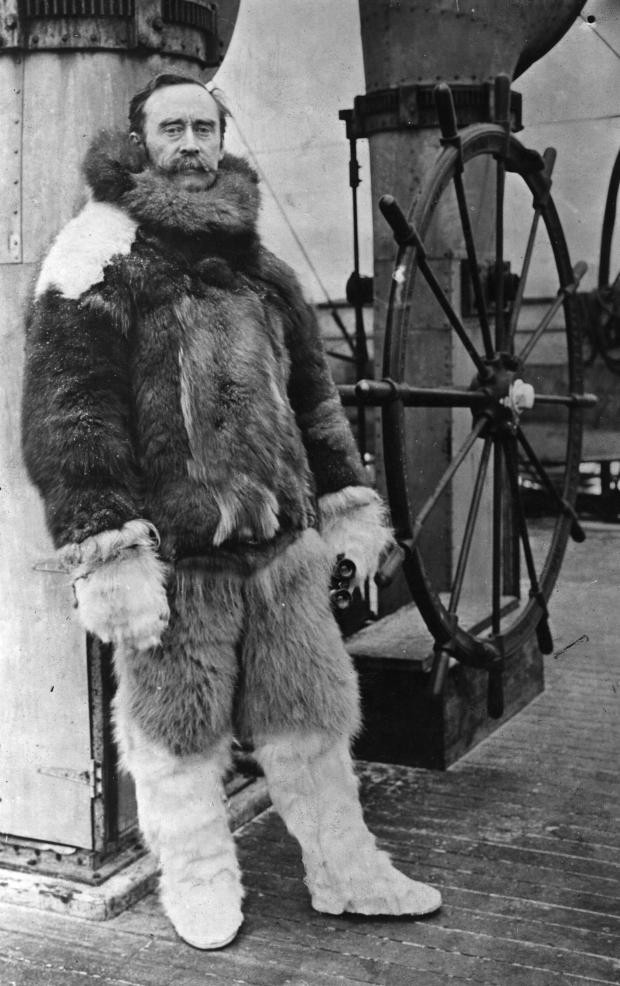The mystery of the island's existence
The island called "Crocker" with the comment "Discovered by Peary in 1906" is still in the hundred-year-old map stored at the US National Geographic Library.
Peary was the famous explorer Robert Peary at the end of the 19 th century at the beginning of the 20th century. The desire to be the first to conquer the North Pole, immediately after his discharge in the summer of 1905, he immediately left New York on the Roosevelt toward the Atlantic Ocean. However, because the wind storm was too strong and the food was not enough, he had to return when he had just traveled several hundred nautical miles.

Crocker Island on the map.
Still not discouraged, he began applying for funding, the most generous being George Crocker with $ 50,000, a huge number at that time. In return, Peary had to find a new land and take the Crocker to name it. After a long trip ended in 1906, Peary wrote in his autobiography that he found a mountain off the north of Canada and named it the Crocker as agreed.
Also in 1906, Peary succeeded in reaching the North Pole and being honored everywhere. Celebrating his long victory, Frederick Cook, a friend who once explored with Peary in 1891, argued that he had set foot on the North Pole a year before Peary. The controversy that won the merit on my side was extremely loud at that time. In order to discredit Peary, Cook said Crocker Island did not exist. As expected, the public turned to suspicion.

Peary on the boat.
To protect Peary, MacMillian explorer from the University of Illinois and the American Geographic Society set out to search for the truth in 1913 with a number of state-of-the-art equipment, including a live radio transmitter. Having to change vehicles because the ship was wrecked, MacMillian continued her journey, but never saw the island as Peary described.
When he was about to be discouraged, a US Navy sailor reported that he saw a white mountain on the horizon with coordinates, but after 5 days of searching MacMillian still saw nothing. He doubted the sailor had encountered the "fata morgana" phenomenon that caused visual illusion that there were mountains on the horizon, and the island was obscured by clouds and weather phenomena. MacMillian did not want to believe that Peary was lying or hallucinating.
The MacMillian Group's journey to the United States is not favorable. Tortured by harsh weather, the dogs brought them to death. They were trapped in the snowy area for 3 years, trying to hold back until they were rescued in 1917. During this time, they collected more pictures and scientific data, but did not see the shadow. island

MacMillian in a cold fur suit.
Back home, MacMillian had never questioned Peary about the existence of the Crocker Island as well as the motive of making stories. Peary himself argued that near the Arctic the vision was narrow and the observation was extremely difficult when the four surfaces were white. Note that individual Peary members did not mention this land, but they did not want to speak officially. Over a century has passed, all have become ancient people, while the remains of the Crocker island are only in old maps.
In 1938, all suspicion ended when the pilot Isaac Schlossbach flew over the place on the map, and saw only the blue sea.
- The last chance to visit these 12 islands before it completely disappears
- The mystery of the Bigfoot beast is clarified
- The mystery of the existence of UFOs
- Turtle Island - Colon Islands
- Simple and easy to understand explanation of the existence of each individual in this world
- Answer the mystery surrounding the existence of the Earth
- Indonesia has lost 4,000 islands
- There is no evidence of Bigfoot's existence
- Islands have much higher radioactivity than Chernobyl and Fukushima
- Found eel eggs in the wild
- Discover 9 islands with strange shapes
- Find out the secret of self-rolling rocks in Ireland
 The truth about the mysterious red-haired giant at Lovelock Cave
The truth about the mysterious red-haired giant at Lovelock Cave Inunaki Tunnel: The haunted road leading into Japan's 'village of death'
Inunaki Tunnel: The haunted road leading into Japan's 'village of death' The mystery of the phenomenon of human reflection before dying
The mystery of the phenomenon of human reflection before dying 6 mysterious phenomena, although science has been developed for a long time, still cannot be answered
6 mysterious phenomena, although science has been developed for a long time, still cannot be answered